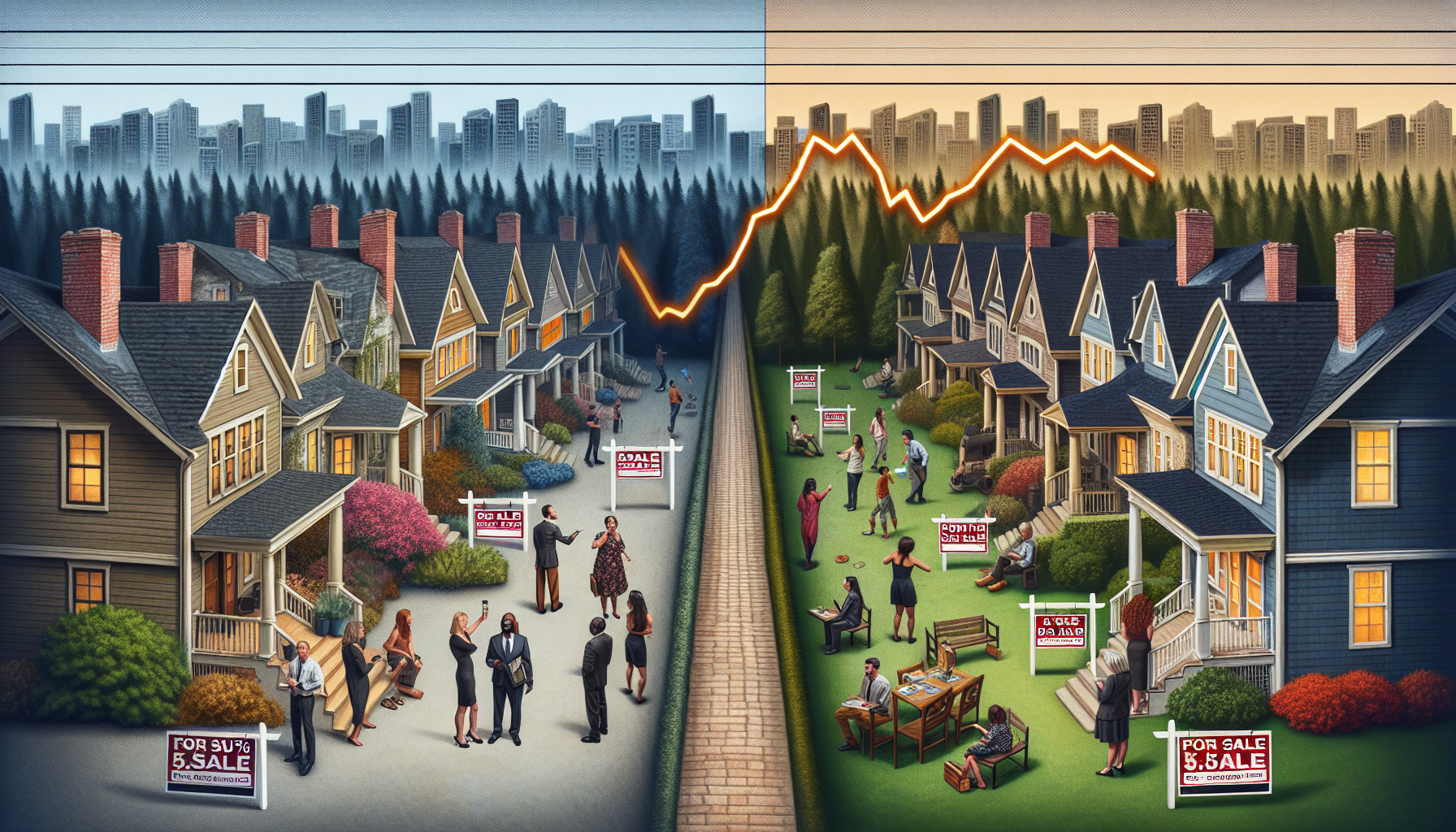
tl;dr
The housing market remains stagnant as mortgage rates hover near 6.30%, with experts pinpointing a 5.75% threshold as critical to reignite buyer activity. Sellers hesitant to leave low pandemic rates and lingering economic uncertainty keep inventory tight, but a rate drop could unlock a surge in tra...
The housing market has long been a barometer of economic health, but recent years have seen it locked in a prolonged slump, stifled by elevated mortgage rates and a lack of inventory. As of late 2025, the average 30-year mortgage rate hovers near 6.30%, a decline from its 2025 peak of 7% but still far from levels that could reignite buyer interest. Industry experts suggest that a significant drop—to around 5.75%—is needed to reverse the trend and attract a wave of homebuyers.
Recent surveys by real estate software platform HomeLight highlight this threshold. A majority of lenders (63%) and real estate agents agree that rates would need to fall to 5.75% or lower to spark meaningful activity. “If there is an interest rate drop to 5.75% or lower, I believe that we will see a very, very swift increase in buyer activity and buyer motivation to purchase,” said Stacy Dillard, a real estate agent in Tampa Bay, reflecting the sentiment of many in the industry.
The current market dynamics underscore the challenge. While new-home sales saw a brief surge in August, driven by lower rates and builder incentives, existing home sales remain sluggish. Buyers face a dual barrier: high mortgage rates and soaring home prices, which together have priced many out of the market. Meanwhile, sellers who secured ultra-low rates during the pandemic—often below 3%—are hesitant to relinquish their favorable terms, further limiting inventory.
The Federal Reserve’s recent rate cut in September 2025 initially spurred optimism, with rates dipping as the market priced in the decision. However, rates rebounded slightly afterward, leaving buyers in a state of limbo. Mariah O’Keefe, a Redfin agent in Seattle, noted that “rates have not gone down significantly enough to move the needle,” adding that a drop below 6% could entice more buyers back. Redfin’s data reveals that nearly 20% of homeowners now have rates of 6% or higher, the highest since 2015, while over half still benefit from rates below 4%.
A potential rate decline to 5.75% could also prompt more homeowners to list their properties, addressing the chronic shortage of inventory. However, the timing of such a move remains uncertain. Agents like Nathan LaLonde in Houston warn that while lower rates could eventually drive prices up, the immediate impact might be muted. “Lower rates eventually affect demand and could have prices start increasing again, but not immediately,” he said, emphasizing the delicate balance between buyer enthusiasm and seller caution.
For buyers, the window of opportunity hinges on both rate reductions and inventory growth. As the market waits for clarity, the 5.75% benchmark has become a focal point—a threshold that, if crossed, could transform the stagnant housing landscape into a more dynamic one. Yet, as Phil Crescenzo Jr. of Nation One Mortgage Corporation noted, even a half-percentage-point shift could act as a catalyst, with further declines potentially fueling a surge in activity.
The path forward remains uncertain, but one thing is clear: the housing market’s revival depends not just on lower rates, but on a confluence of factors, including seller willingness to list homes and buyer confidence. Until then, the market will likely remain in a holding pattern, with stakeholders watching closely for the signal that could reignite momentum.